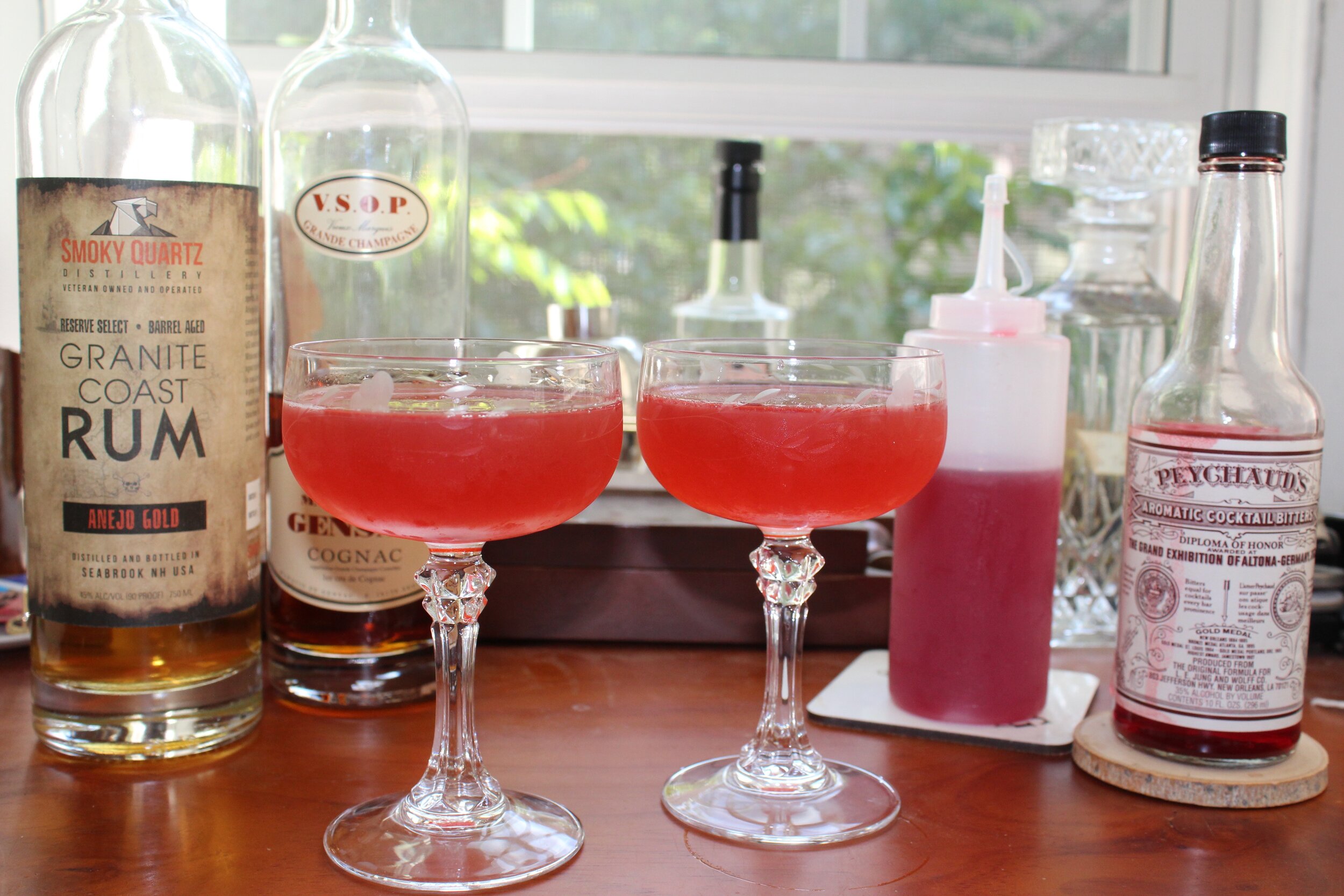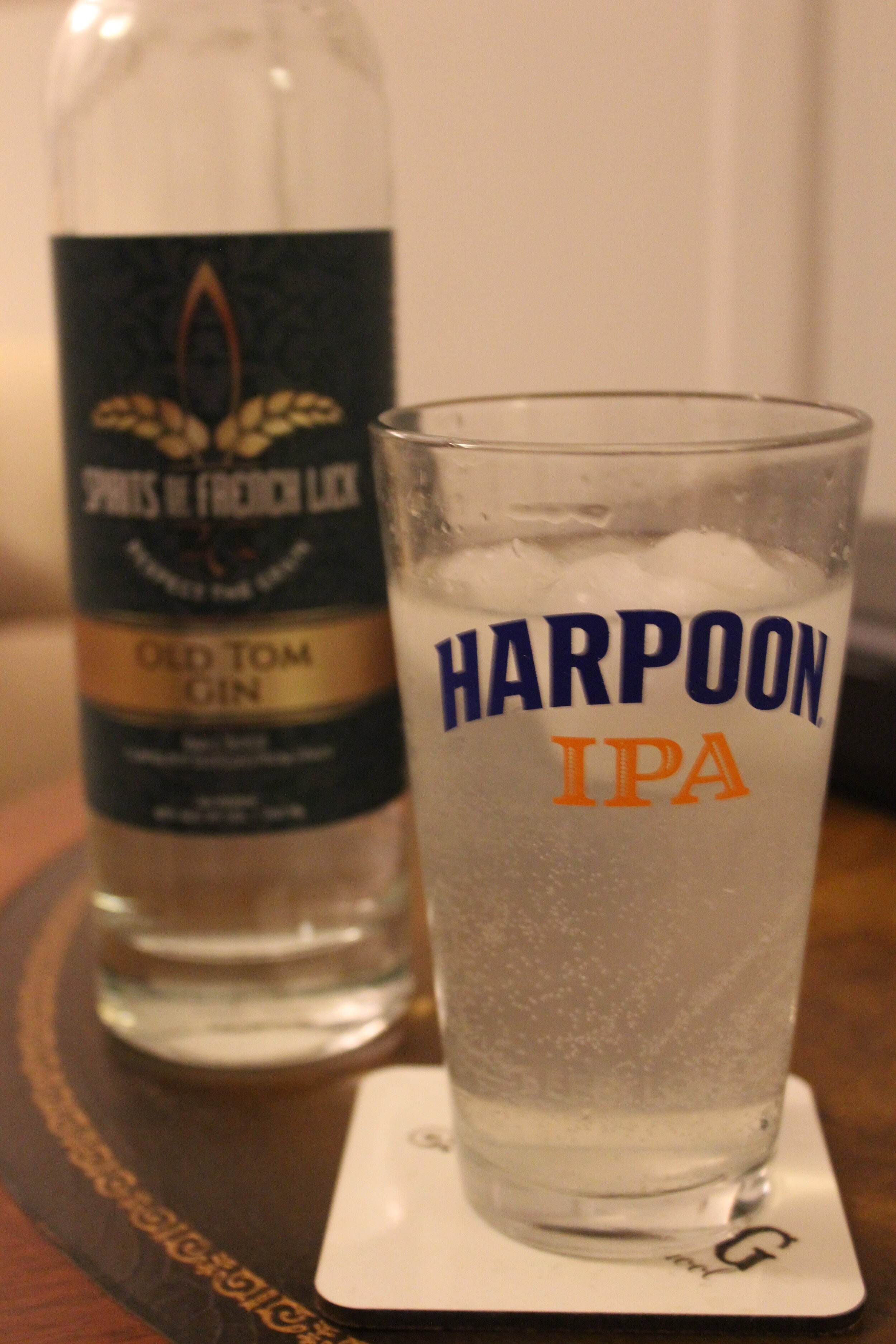Improved Quaker's Cocktail
I spent a lot of time with the Savoy Cocktail Book when working on recipes for Classic Cocktails. Playing around with the old books is particularly fun when a recipe catches your eye and makes you say, ‘wait, why haven’t I had that before?” This was the case with the Quaker’s Cocktail, an oddly-monikered concoction recorded thus by Harry Craddock:
Quaker’s Cocktail (Savoy)
1/3 Brandy
1/3 Rum
1/6 Lemon Juice
1/6 Raspberry Syrup
I’d never heard of it before, so I didn’t think I could justify including it as a ‘classic’ for the purposes of the book, but something about it struck me. It seemed like it would be good, or could be good. I marked the page for future reference, but I kept thinking about it. Weeks later, once I could begin making non-book cocktails again, I decided to take it for a spin.
Note that Harry Craddock’s measurements are fractions of the overall drink. 3 oz. is a pretty standard size for a cocktail, so you could read the above as:
Quaker’s Cocktail (U.S. Customary Units)
1 oz. Brandy
1 oz. Rum
½ oz. Lemon Juice
½ oz. Raspberry Syrup
Craddock recommends shaking, and I agree. I also feel very confident that this is a drink for an aged rum, not a white one.* I have a bottle of bourbon-barrel aged Granite Coast Rum from New Hampshire which has been my go-to during the lockdown (I had two bottles of it when this started). The Gensac Cognac I’ve been using lately joined it, along with fresh lemon juice and some of that oh-so-tasty homemade raspberry syrup I wrote about a while back.
It…wasn’t quite there. I mean, it was tasty, sure, but something was missing. The pieces didn’t harmonize the way I felt they should.
On the one hand, this meant my original question was answered: I’d never had this drink before because it was merely OK. But on the other hand, I was certain there was a really delicious drink in there somewhere. I just had to find it.
I’ll be honest, my memory of my process is a little shaky at this point. But I know that I took inspiration from Chad Arnholt’s Ward Eight recipe, which is my oft-recommended personal favorite.† To really make the raspberry pop, I dialed it up by a quarter of an ounce. And to bridge the gap between the bright, assertive sour of the fresh lemon juice and the rest of the ingredients, I worked in a bit of orange, and mixed a drink that looked something like this:
Quaker’s Cocktail Variation (Pseudo-Arnholt)
1 oz. Cognac
3/4 oz. Aged Rum
3/4 oz. Raspberry Syrup
1/2 oz. Lemon Juice
1/4 oz. Orange Juice
Shake, strain, serve up.
A couple of things to note here. First of all, people like to hate on orange juice as a cocktail ingredient these days. It’s not as sour as other citrus, it’s not as sweet as other ingredients, the flavor isn’t assertive enough so you have to use too much of it and water down the drink - yadda yadda whatever.
As has been noted by some very intelligent people, oranges today may not taste like they did early in the 20th century, when the Ward Eight and the Blood and Sand were gaining steam. It may be the case that our forebears had access to more cocktail-amenable citrus than we do. But that doesn’t mean we can’t work with what we do have, and fresh orange juice is still a wonderfully fragrant and tasty ingredient. Like any tool, you just have to understand the purpose to which it’s best suited.
In several drinks, the Arnholt Ward Eight among them, orange is a way of adding a little citrus brightness and acidity to a drink that would be overpowered by lemon or lime juice or the oil from a citrus-peel garnish. It’s a subtle addition. If lemon, syrups, and spirits are the building blocks of a drink, orange is the mortar that fills the gaps and makes the recipe work. It isn’t most of what you’ll see; if it’s well done, you may not even notice it’s there. But the role it plays is essential.
Put another way, orange juice doesn’t really work like a juice in mixed drinks. You use it the way you’d use other tricky ingredients, like maraschino, crème de violette, and kirschwasser: a quarter of an ounce at a time, unless you have a very good reason for a heavier pour.
This reasoning led me to this slight interpolation of the Ward Eight, which I doctored further as I went. Craddock was right that the brandy and rum should be equal partners in this, and I rapidly added an extra 1/4 oz of rum to balance it out; that also brought the overall ethanol more into line with the Arnholt Ward Eight, which is designed for a 100º whiskey.
It still needed a finishing touch, so as I often do in that situation, I added a dash of Peychaud’s. That’s when it really started to sing. I made a fresh batch incorporating those adjustments and confirmed its deliciousness:
Improved Quaker’s Cocktail
1 oz. Cognac
1 oz. Aged Rum
3/4 oz. Raspberry Syrup
1/2 oz. Fresh Lemon Juice
1/4 oz. Fresh Orange Juice
2 dashes Peychaud’s Bitters
Shake. Double strain into a chilled coupe.
This is the drink I was looking for when I first spotted the Quaker’s Cocktail in the Savoy. I knew it was in there somewhere.
I do think the final recipe is different enough that it should have a different name. The ingredients and 2:1:1 proportions were broadly agreed upon for the first couple of decades after it appeared in print, including by both of the Two Great Harries of Prohibition (Craddock and MacElhone). Or so I learn from the only serious treatment of the drink’s history I’ve yet found, written in German by Armin Zimmermann of Bar Vademecum and gamely translated by Google.
Armin’s article also reprints a few dozen recipes for the Quaker’s Cocktail, from books going back to 1923. Orange does show up twice, including in a 1948 recipe from Trader Vic, although in both of its appearances it’s replacing the lemon juice rather than supplementing it. I could probably get away with saying I was splitting the difference with my version and stick to the ‘Quaker’ moniker, but not one single recipe in the entire list uses bitters of any kind.
So, the question now is what to call the new one. Please feel free to comment or email me with your opinions! In the meantime, here’s my shortlist:
Fighting Quaker - A nickname of Nathanael Greene, a Revolutionary War general from Rhode Island who was also dubbed the Savior of the South for his successes in that theater of the war. Nods at the drink’s heritage, the geographic origins of the added ingredients, and my strong affection for New England. Also feels more like the name of a cocktail than “Quaker’s Cocktail” does. I’d say this is the leading candidate right now.
Canaveral - Did you know Richard Nixon was a Quaker? And although it was Kennedy who promised we’d get to the moon by the end of the decade, Nixon was president when we actually got there. It’s a deeper cut, but I got here by saying, “Hmm. Oranges. Florida. What’s the strongest connection I can make between Quakers and that?” And like ‘Fighting Quaker,’ it’s really not a bad name for a drink.
Society of Friends - Too on the nose? Perhaps. It’s a version of the term Quakers use for themselves, and I like that it’s also a direct quote from George Pierson’s line about Yale. But there’s still something strange about naming a drink after a booze-skeptical religious group, particularly now that Prohibition is over. (“Fighting Quaker” does this too, but it highlights the irony and doubles down on it, which I think makes much more sense.)
Notes
(*) Erik Ellestad of Savoy Stomp went the other way on both, but he found the result underwhelming.
(†) For a refresher:
Ward Eight
1 3/4 oz. 100º Rye
3/4 oz. Grenadine
1/2 oz. Lemon Juice
1/4 oz. Orange Juice
Shake, strain, serve up.
Eagle-eyed readers may note that I also drew on this structure for the Applejack Rabbit recipe published in the last post. Arnholt hit this one out of the park.










